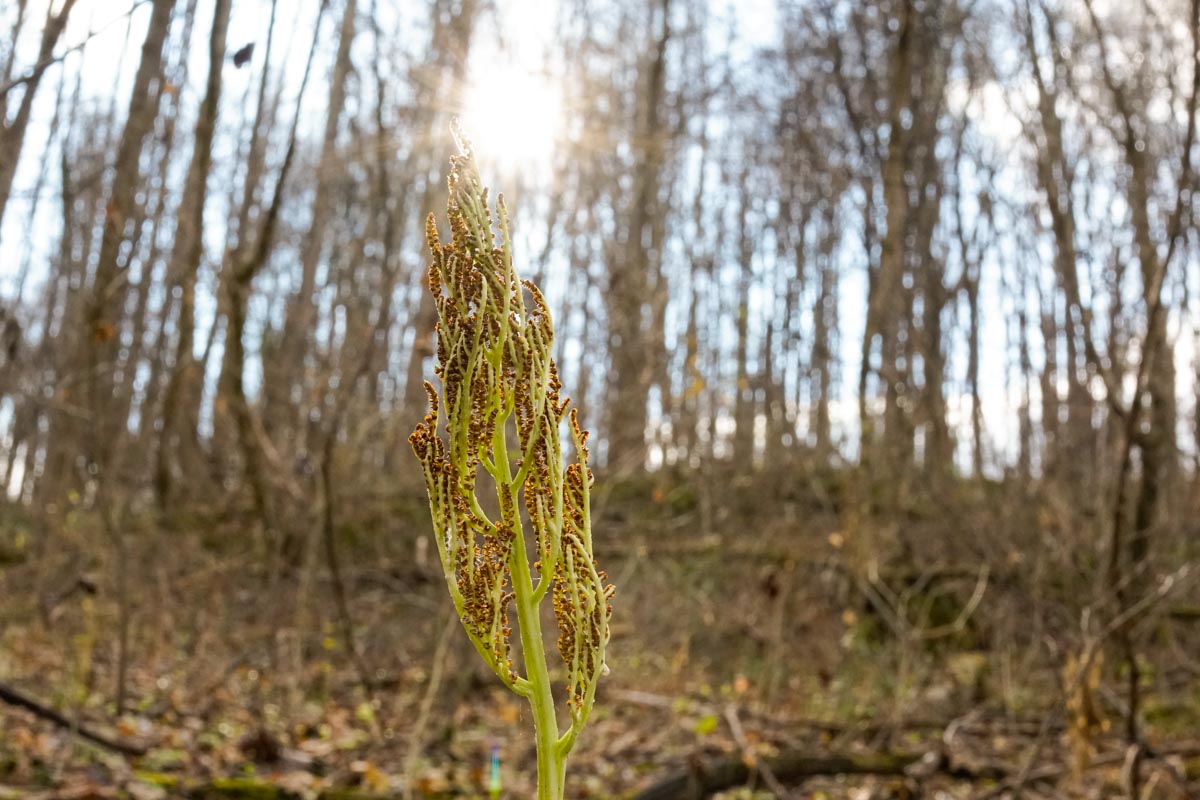My aunt, Ruth Smiley, spent over half a century helping shape the gardens and wild areas of Mohonk Mountain House in the Catskills of upstate New York. Though she spent much of her time on the formal gardens, she also enthusiastically explored the plant life of the surrounding woods and meadows. My family spent countless hours exploring these with her on our frequent visits on weekends and holidays. Her passion was a Fern Trail she developed, full of wildflowers and ferns that brought the gems of the surrounding wild areas to the garden. Having spent so much time with her, I can’t help but be fascinated by ferns.
In my yard there are a number of ferns growing wild. Christmas ferns keep their fronds through the winter, providing some green in the otherwise tan and brown woods. They grow their new fronds in early spring, generally mid to late March. A few weeks later the new fronds of rattlesnake ferns emerge. Toward the end of April, the maidenhair ferns send up their first fronds. There are several other ferns also, in smaller numbers, but these are the ones that dominate my forest.
At the moment the Christmas ferns are their typical green, though a bit worse for wear, gearing up for their namesake season. The maidenhair ferns are turning brown, though in sheltered locations a few are still green. It has been in the low 20s most nights lately, so it is taking a toll on all the plants. The rattlesnake ferns, however, still look very fresh. They seem to produce spores at two times of the year, though only once for each plant. Some produce spores shortly after emerging, in late April. But some plants come up later, and these are actively producing spores right now, in spite of the unseasonably cold weather. As I stepped off the trail to take this picture, a fallen twig I stepped on tapped this plant and set off an enormous cloud of spores.
Rattlesnake ferns can grow as tall as three feet, but mine usually top out at only one or two feet. The part that grows above ground is really one leaf split into two parts, with the spore-bearing part coming off the main stem. Their name refers to the sporangia, which hold the spores, looking like the rattle of a rattlesnake.
Though not as common as the Christmas or maidenhair ferns, rattlesnake ferns form small colonies in several parts of the woods, with isolated individuals dotted through the forest. They also provide one of the few signs of life right now as winter has chosen to arrive early. Although they may not be the best conversationalists, now when the woods are largely silent and plants are mostly dormant, I have found that ferns can be friends.
